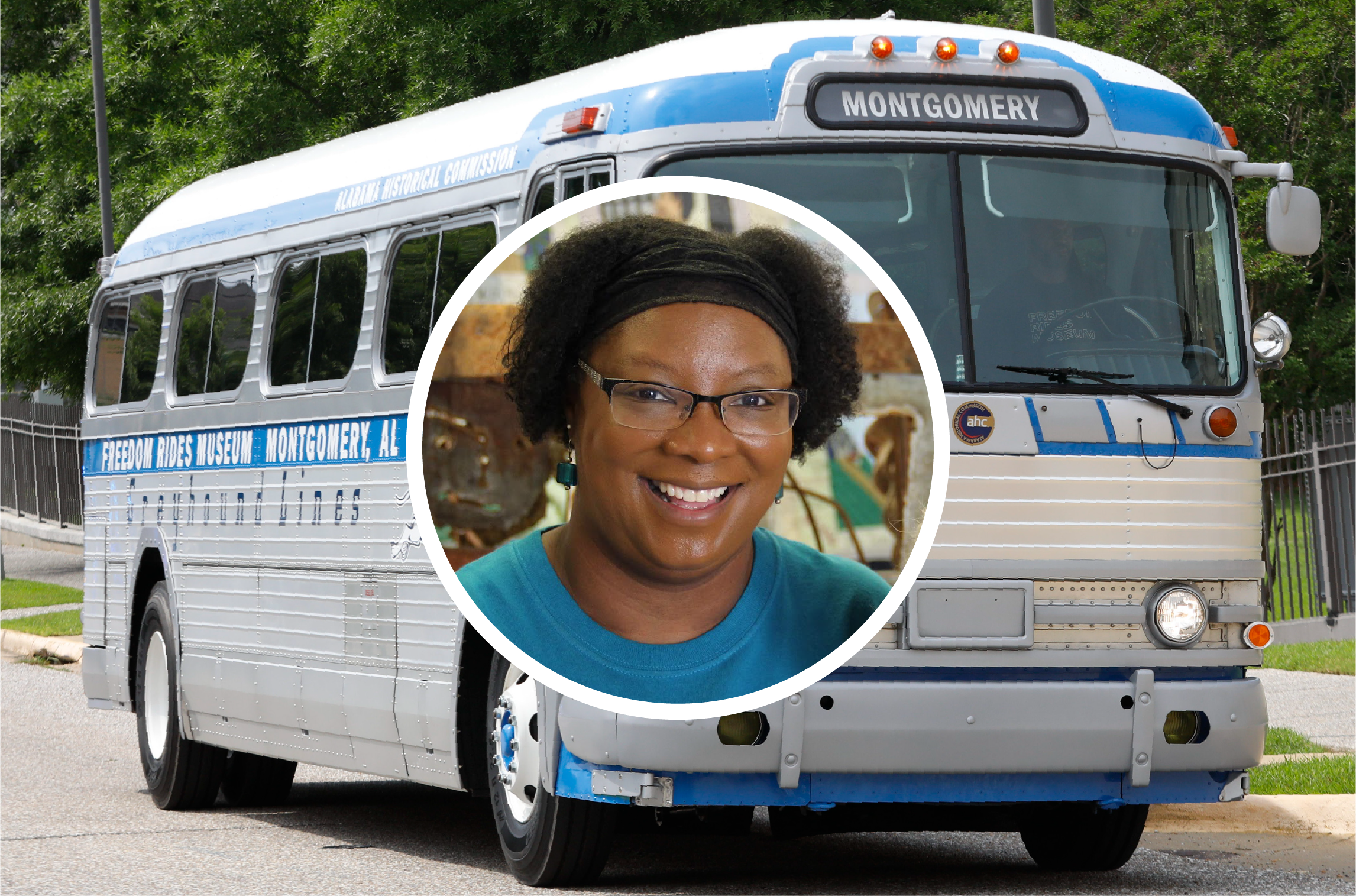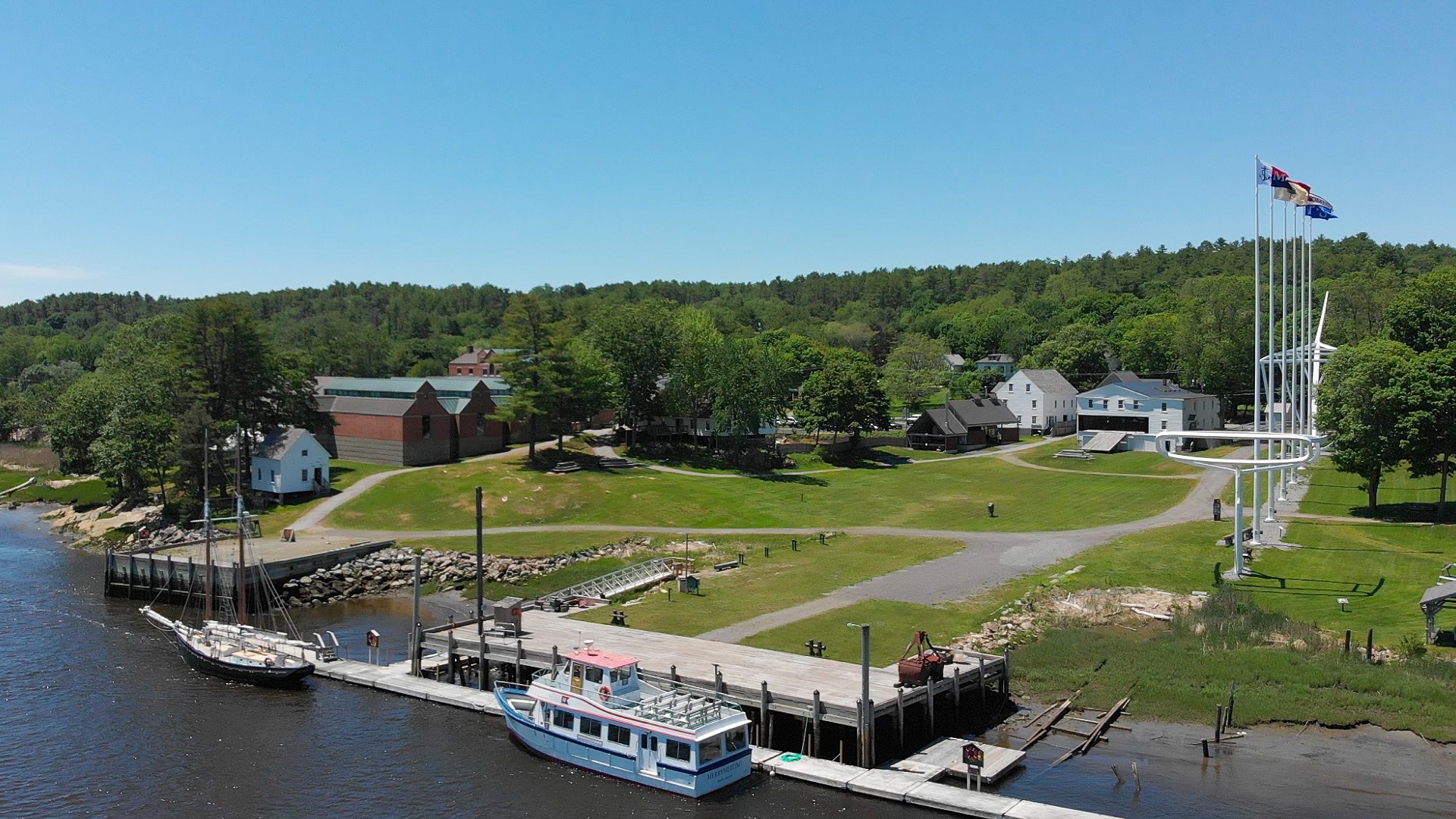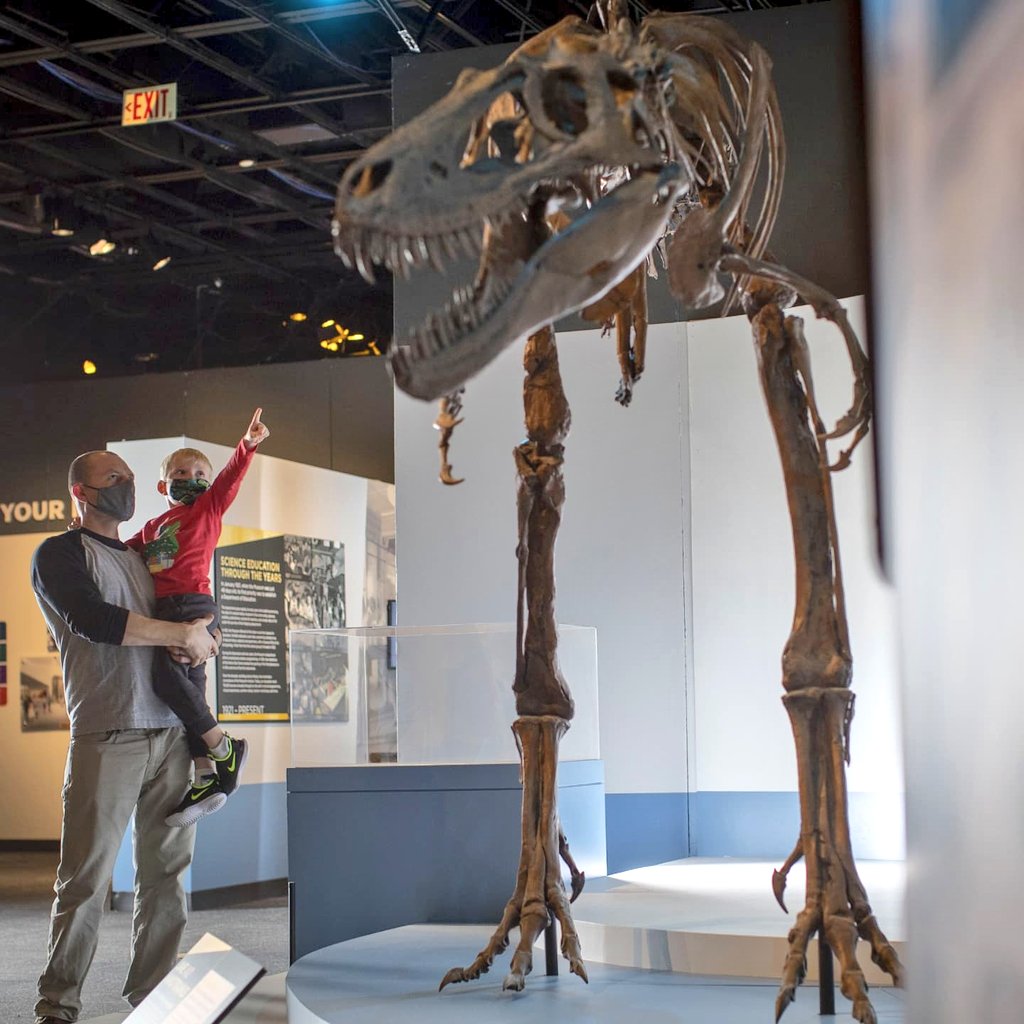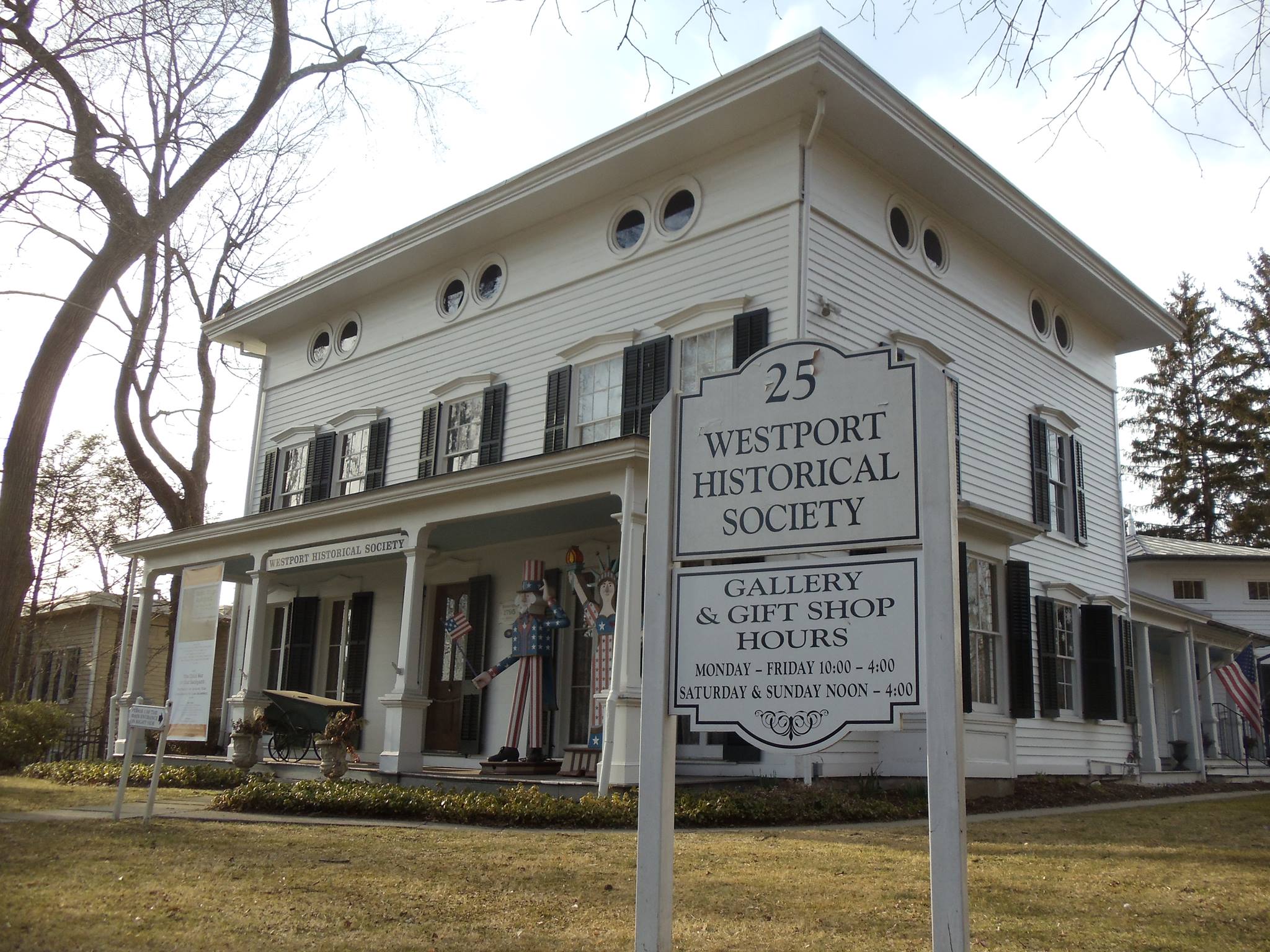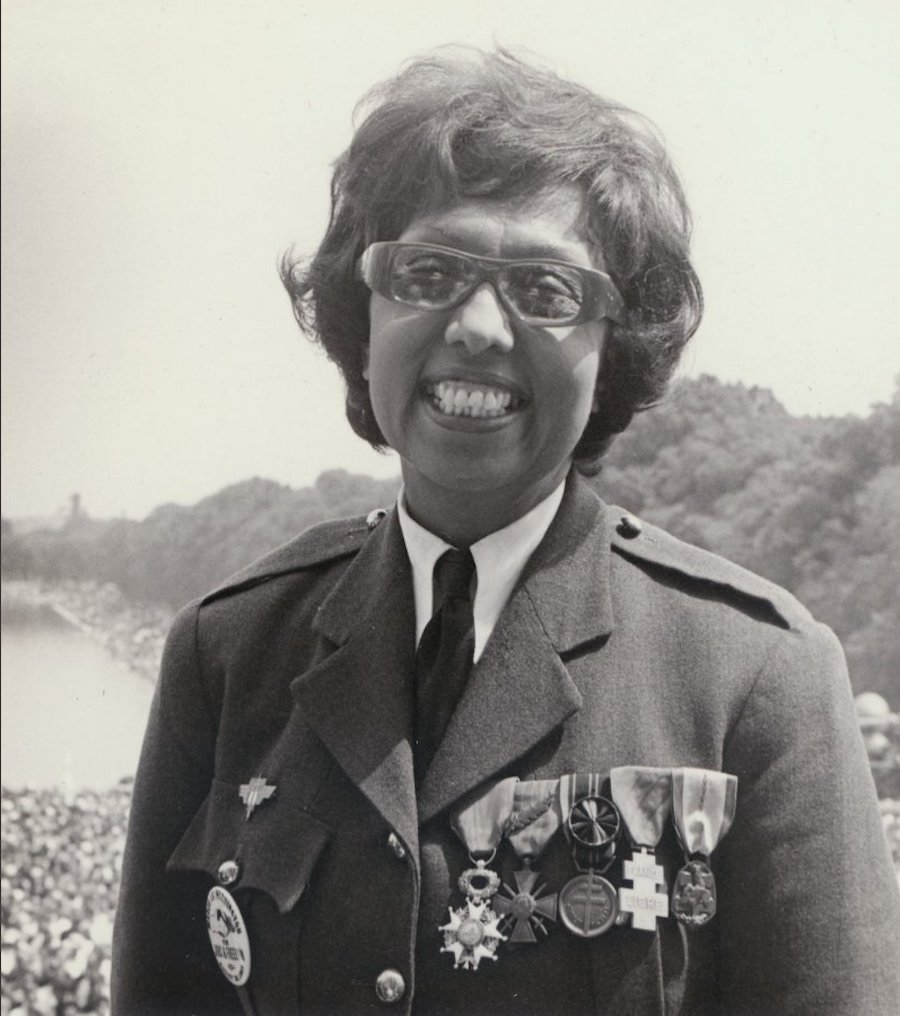John Swaine, International Civil Rights Center & Museum
In fall 2014, John L. Swaine was named the first Chief Executive Officer of the International Civil Rights Center & Museum in Greensboro, North Carolina. He had previously served as the museum’s Chief Financial Officer since 2009. Swaine earned his bachelor’s degree in Accounting with a minor in Finance, and later earned his Accounting license in the state of Virginia. Recognizing these qualities and his professional commitment, in 2013 The Triad Business Journal named Swaine “Financial Executive of the Year” for non-profit corporations.

How are you doing at the museum with everything that’s been going on this past year?
Everything is going just fine so far. We did a lot of planning during the COVID shutdown, and it seems to be paying off. Our visitation is very good.
Did you do anything while you were closed to continue connecting with the public?
The first ten to eleven years of the museum’s life have been extremely busy, and so we didn’t really have an opportunity to just stop and take stock of how we interface with the public, and do some of the archiving that really needed to be done. So I came to work each day during COVID and brought staff in to maintain social distance, wear a mask, and all of that.
We continued to churn out a couple of exhibits for people to be able to read while on the street and still connect with us. We put our new website forward and were able to do a lot of deep cleaning in the museum. And when I say deep cleaning, I’m talking seriously deep cleaning: replacements and painting and refreshing the place. So there was a lot going on while the museum was shut down.

It sounds like you really took advantage of it.
I had to. We had not had an opportunity where we could just step off of this merry-go-round for a little while and reassess things.
I saw you have virtual tours. How did that come about and are you planning to continue them past COVID?
Yes, we will. Over the last few years, I’ve had a number of teachers to visit the International Civil Rights Center from other places like Connecticut or Pennsylvania, and their comment always is, “I wish I could bring all of my students here.”
During my time in Israel, I toured the Yad Vashem Museum there. For the first time, it hit me how to really look at this museum and change the way we’re doing business. So I came back and during the COVID shutdown, I discussed these ideas with our principal scholar and a couple of other senior staff. We recorded the professional tours of the museum by five of our senior interpreters and made those available on the website.
Then we took it another step further and decided that we would build interactive tools from that. We have conducted tours in Africa, in Chile, in Germany, in a number of countries so far, and it’s all because of us having to stop doing business the way we’ve done it all these years and rethink our presentations.
It sounds like you’ve really taken this time to adapt to everything strategically.
I had looked forward to a golden opportunity when we would be able to step aside and reimagine what this museum should be for the community and every person who walks in. My principal scholar, Dr. Will Harris from the University of Pennsylvania, was a partner through all of this. When he started talking to me about some of the possibilities I was skeptical at first, but we kept talking and we got to that point where I said, “Let’s just bite the bullet and do this and try it.”
When you were able to bring people back into the museum, how did re-opening go?
We have started seeing people come through again. When we opened our doors on September 5, 2020, we were ready to welcome customers back. They were looking for things to do. We had a number of telephone calls on a daily basis asking, “Do you need any support? What can we do to help?”
People really embrace this institution, and for us, being here is a testament of all of that. When our walk-in traffic returned, we continued to conduct in-person tours, and we designed a sit-down tour so that we could give customers options now. Many of our staff were still concerned about leading tours, so instead of them taking a group of twenty-five people through the museum, we trimmed that back to a group of ten to twelve people, and they feel a little bit more comfortable with that.

What are you doing to sort of ensure that the museum is sustainable, both financially and also culturally?
What we’re doing is continuing to raise support and awareness for the museum. Refreshing our website and making it more usable is helping our sustainability and our outreach. I have seen more people signing up to get information from this museum in the last year than I’ve seen in a long, long time.
We are investing some resources and re-training our staff. We have just received two grants to produce five more tours. They’re going to be deep-dive tours. That is one way for us to continue to bring people back who have been through and seen our permanent exhibit or have experienced the film exhibit or the sit-down tours. We have managed to bring a lot of operating costs under control, like utilities and those types of things, so that’s helping us toward our survival efforts.
A lot of what’s gone on in the past year with the current social justice movement speaks to the topics that you are already covering at museum, but has that impacted the museum in the ways in which people interact with it?
It definitely has. I am seeing a paradigm shift with our visitors and the questions that they’re asking. Many of them want to know more about the movement for Black Lives. They’re wanting to expose their children to things that they did not expose them to previously.
I’ve taken this opportunity to reach out to our police departments in Charlotte-Mecklenburg and Fayetteville, Winston-Salem, High Point, Greensboro, and I will get around to Burlington as well. We feel like being an educational resource for the police officers and our first responders is very important because people need to understand different cultures and different attitudes and approaches to life.
We’re here to answer a number of questions along those lines and help the community who are interested in really learning, help them to understand what they’re seeing and why they are seeing it, and being a non-threatening organization that welcomes those types of questions.

What are some of the challenges of being a museum that does directly address these conversations that have been going on?
The main challenge right now is connecting directly with people and with the virus. You are still having to be extra careful. One of the ways that we have responded to that is putting together a program called Street Talk and we hosted our first one on June 5.
We are setting chairs out in the streets and in small groups of eight to ten people. We’re entering into dialogue about social justice issues—non-threatening, non-political issues—that we can come together over. We used to bring people into the museum, into the auditorium or the classrooms. Now we have taken that to outside. It’s hot out there, but it’s far better.
Do you see maybe people coming to the museum now and engaging in dialogue that maybe weren’t before the past couple of years?
I am seeing a number of people who walk into this museum that you would think would not care about civil rights. But you know, my mother would always say, “Don’t judge the book by its cover, but open it up, read it, understand it.”
We are seeing people who are just now coming into the museum for the first time. People who live right here in Greensboro, North Carolina. Someone posted on our TripAdvisor page that they were ashamed that the museum had been open for eleven years, and they’re just now coming in to take a tour and they learned a lot while they’re here. People will come when they are ready, and I think right now we’re seeing a lot of people who are reminding themselves that it’s past time.
Going forward in this post-pandemic world, what changes in visitor behavior do you think museums can expect to see?
I think museums have had to survive through this pandemic through a number of means, and I think what we have seen is a lot of people have engaged socially through the internet, Zoom and other platforms. It’s nice to see people walk through the doors, but with the advent of online mediums like Zoom, it opens up greater opportunities for you to connect even further than we could have in the past.

Looking to the future, is there anything that you’re hoping to be able to do or explore as we continue to adapt?
We have quite a bit in our plans for the future. We are always looking at new exhibits and basically trying to pull as much scholarly material out of our staff and people who live here in Greensboro. Greensboro is surrounded by a number of colleges and universities, and there are some very sharp educators right here in our own backyard. This also opens up opportunity for collaborations with smaller museums.
We are aspiring to become a World Heritage inscribed institution. Most places in downtown Greensboro, they can pack up shop and go anywhere. We are stuck in this spot. Here’s where the sit-in movement kicked off in the 1960s.
So I’ve been in the middle of a ten-year process for a World Heritage inscription. If we’re successful with achieving that, and I think that we will be, we will be the first in the state of North Carolina to hold a World Heritage inscription other than the Great Smoky Mountains. So it’s very powerful, and that means that people from all across the country would put this on their bucket list to travel to.
What do you think the continuing role of museums is?
Museums are the keepers of memory, and without museums, things are here today and gone tomorrow. There are profound roles that museums must play in helping a community understand where we were, who we were, and who we have evolved to be today. That is the role of museums from where I see it, and particularly this one.
When we talk about the struggles of the 1800s, the 1900s and to the current time, our visitors walk away feeling empowered, like they can make a difference. The story is not done. There is much, much more to be done in our countries, and museums are the holders of that memory, so that we have a place to begin to dig and understand and evaluate, but to build more impactful labs and communities.
What do you think is the future of museums?
The future looks quite bright for museums. During the pandemic one-third of museums around the country were threatened by closures. The ones that have managed to survive, they are a source of tourism. If communities evaluate and assess their local museums as opportunities to attract people to their communities, they not only spend money in a museum for admissions and learning, they also visit local restaurants and local hotel. So the role for museums in the future as we move forward is to help with the continued tourism and revitalization of towns and communities.




